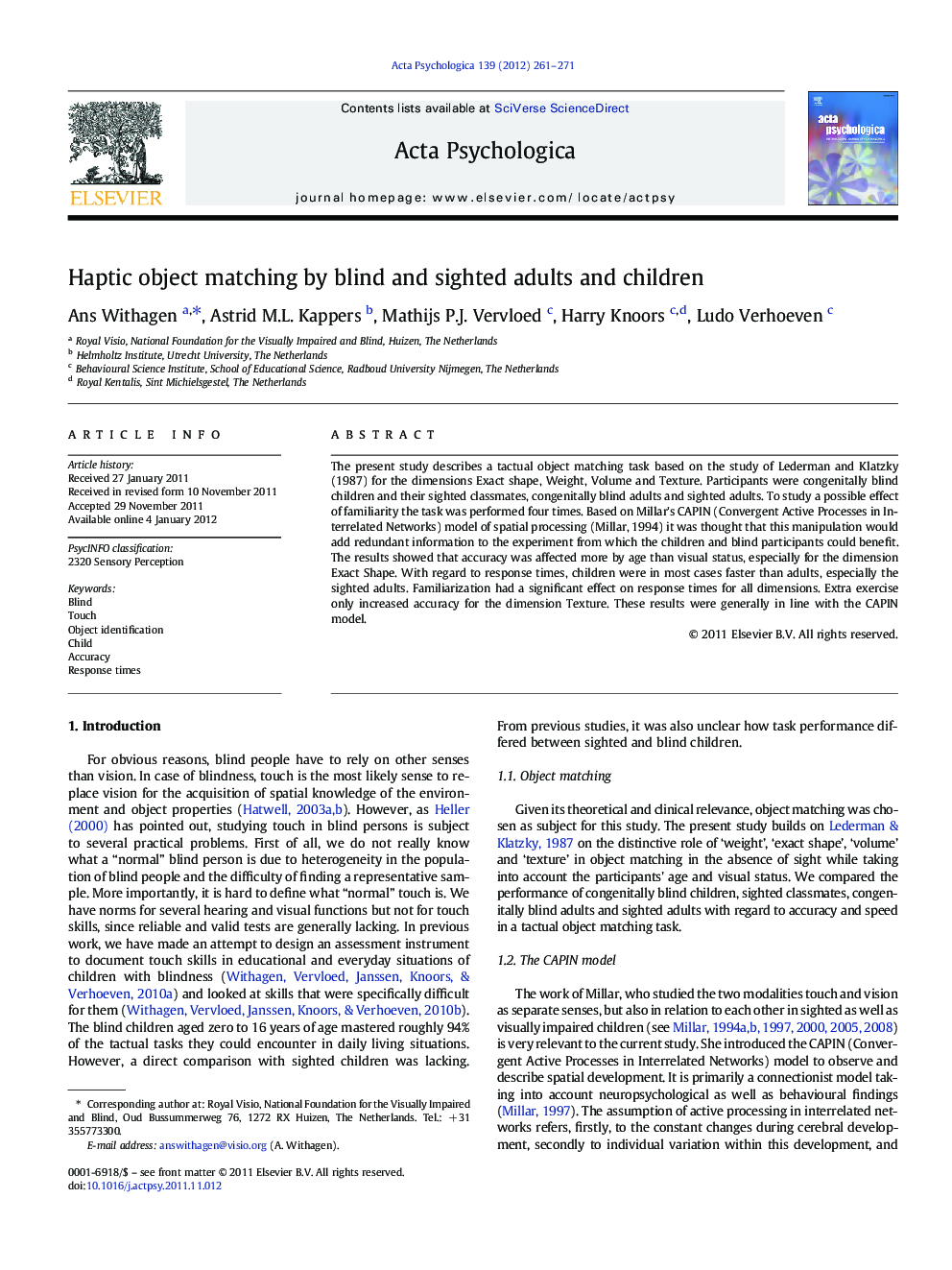| Article ID | Journal | Published Year | Pages | File Type |
|---|---|---|---|---|
| 919990 | Acta Psychologica | 2012 | 11 Pages |
The present study describes a tactual object matching task based on the study of Lederman and Klatzky (1987) for the dimensions Exact shape, Weight, Volume and Texture. Participants were congenitally blind children and their sighted classmates, congenitally blind adults and sighted adults. To study a possible effect of familiarity the task was performed four times. Based on Millar's CAPIN (Convergent Active Processes in Interrelated Networks) model of spatial processing (Millar, 1994) it was thought that this manipulation would add redundant information to the experiment from which the children and blind participants could benefit. The results showed that accuracy was affected more by age than visual status, especially for the dimension Exact Shape. With regard to response times, children were in most cases faster than adults, especially the sighted adults. Familiarization had a significant effect on response times for all dimensions. Extra exercise only increased accuracy for the dimension Texture. These results were generally in line with the CAPIN model.
► We studied tactile object matching for exact shape, weight, volume and texture. ► Blindness hardly affected tactile object identification. ► Children performed faster, but also less accurate than adults. ► Repetition improved response times not accuracy. ► Individual variation was more prominent for accuracy than response times.
